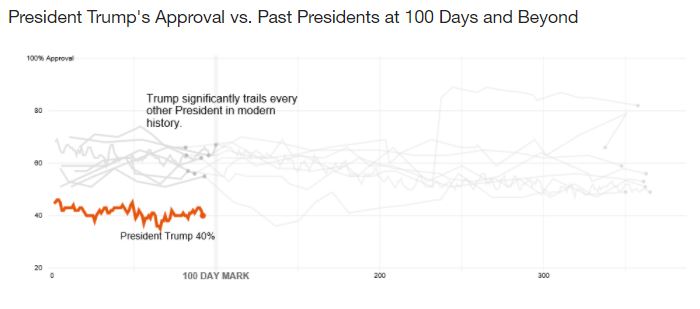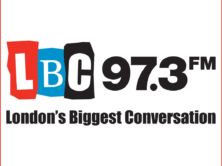
Mark Penn (Credit: MarkPenn.com)
Last week, longtime pollster and political strategist Mark Penn wrote an article for The Hill that purported to explain “Why the polls are wrong about Trump. Again.”
The article is a bit confusing, and even self-contradictory – suggesting on the one hand that national polls are currently underestimating President Trump’s political strength, but then on the other hand using current polls to bolster the argument.
Penn argues that we are living in a “polling bubble,” whatever that means, where “surveys taken from the perches in New York, Washington, and Los Angeles may be obscuring rather than illuminating many of the underlying views and trends of the American electorate.”
This statement is at best disingenuous, implying that polls originating in those three cities are somehow suspect because of their location. In fact, as Penn surely knows from his own decades of experience, it really does not matter where polls originate, whether the “perch” is in any of those cities, or in some other location. What matters is how well-designed the poll is, in order to obtain a representative sample of the population.
Furthermore, his argument that the polls are wrong about Trump “again” is faulty. The national polls showing Clinton winning the popular vote were not “wrong.” As Frank Newport at Gallup wrote, National Polling Accurately Nails Popular Vote, with the aggregate of polls at Real Clear Politics suggesting Clinton would win the popular vote by 3.2 points. She actually won by 2.1 points, just 1.1 percentage points off the mark.
Yes, polls in several states showed Clinton winning enough electoral votes to win the presidency, but Penn is not criticizing those state polls. He is after the national polls, which are showing Trump with the lowest support of any president at this stage of the presidency.
Penn goes after those national polls by falsely linking them to the state polls that were wrong, writing:
“As President Trump enters his 100th day, several of the same organizations [that predicted Clinton to win the popular vote, but did not predict a Trump electoral college victory] are using their polls to proclaim that he has had the worst start of any modern president and the worst ratings of a president at this time in his presidency.
“While Trump is no FDR when it comes to forming a political coalition, a fairer reading of the polls and the election results shows his performance is probably 5 or 6 points better than is being touted and that his base of support with which he won the election remains intact.”
The first sentence is intended to cast doubt on the national polls, because the state polls and the election modelers did not predict Trump to win the presidency. Using Penn’s logic, however, the (actual) relative success of the national polls in the election should reassure him, and the public, that the current measures of Trump’s popularity are probably fairly realistic.
In the second sentence, we see a bait-and-switch tactic. Initially, he wants us to believe those polls that show Trump with “the worst ratings of a president at this time in his presidency” are “wrong.” But he really doesn’t show us why they are wrong in making such comparisons. All he says is that Trump’s rating could be a few points higher, and his base of support remains intact.
OK…let’s assume Trump’s rating could be five or six points higher. Even then, Trump would still be the most unpopular president at this stage of the presidency. Note the chart below posted at NBC. All the ratings of other presidents within 100 days were above the 50% level; only Trump’s consistently fell below 45%.

When Penn adds that Trump’s base of support remains “intact,” he is not contradicting current polls, but parroting them – suggesting they are “right” about Trump, not wrong.
Later in the article, Penn argues that Trump’s support is likely higher than 40% — because of the congressional vote totals (Republicans won both the House and the Senate), and because results of the special congressional election in a Georgia district were similar to the presidential results in that district.
Penn asks, “So what is the disconnect between polls that show his job rating at 40% and the electoral results?”
The question is: Why would anyone ask that question? It’s a non-sequitur. Yes, Republicans may have won the House and Senate in November, but that doesn’t mean that Trump’s popularity four months later should therefore be…anything.
Penn also argues that most pollsters have switched their samples from likely voters (during the election) to “U.S. adults” (now that the election is over). That switch hurts Trump, Penn argues, because typically Republican candidates fare better among likely voters than among the population overall.
It’s true that Republicans are more likely to vote, and that polls based on likely voters will usually produce higher ratings for GOP candidates than polls based on the general population. But that’s a red herring as far as the argument about Trump’s record low ratings are concerned. The ratings for the other presidents were also based on sample of U.S. adults, not likely voters.
Oddly, after writing in the first part of his essay about how wrong the polls are about Trump, toward the end of his essay Penn cites – yes, a current poll! – by ABC/Washington Post, showing 94% of Trump voters approve of the job he is doing. Based on this poll, Penn concludes: “Trump is holding his base.”
Yup. And if we can believe the national polls are right showing Trump holding his base, I guess we can believe those same polls must also be right about Trump and his low popularity.






